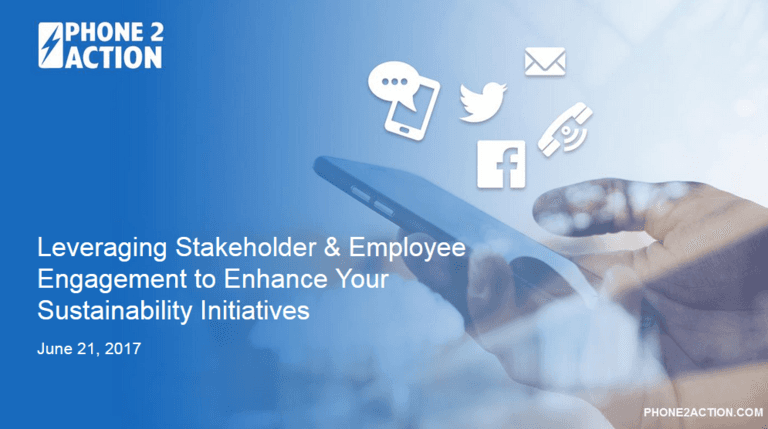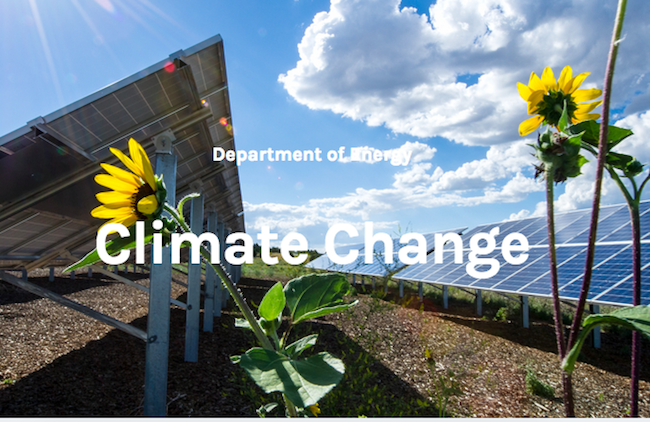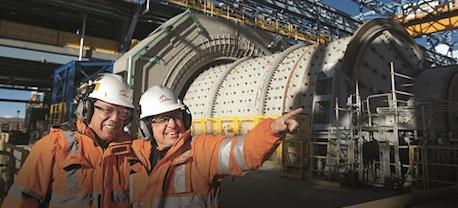How to Expand CSR Past Your Borders


By Kevin Xu
What if you woke up tomorrow morning and no one cared about your company’s products or services, but only your reputation? Would your business survive?
Many businesses know reputation affects their sales, but how much it influences consumers is what really astounds some executives: Sixty percent of consumers polled by the Reputation Institute buy, recommend, or invest in a company on the basis of perception, while 40 percent do it because of the product.
So how does a company eyeing global expansion build credibility with unfamiliar customers? The simple answer is to start a corporate social responsibility (CSR) campaign to bolster the brand. There are so many pieces to this puzzle, though, that the simple answer is never actually simple.
To plot your approach, look at how Eastern and Western cultures differ. Western-based companies tend to publicize their social responsibility campaigns, while Eastern companies keep those initiatives quiet. No matter where you’re expanding, knowing which values the culture prioritizes and how best to reach those consumers is a good way to make sure your business’s nonprofit efforts resonate.
Doing good the right way
In the U.S. and other Western cultures, CSR campaigns are easy to see. Disney promotes the conservation and protection of wildlife; Gap Inc. works with women garment workers from Cambodia and India to promote education and literacy; Microsoft’s NetHope facilitates apprenticeship programs in Kenya.
These programs, while not always promoted in mainstream advertising, are prominently placed on corporate websites and at certain events. They are incorporated into business strategies and used to gain favor with consumers. That’s not to say these initiatives are bad; in fact, it’s quite the opposite.
Samsung’s Mobile App Academy summer program uses corporate promotion and community engagement to help expose high school juniors and seniors to curricula, development camps, and competitions designed to spark interests in STEM-related jobs. The University of Chicago’s partnership with Tata Trusts allows policymakers, students, and professionals to come together and address key concerns about health, water, sanitation, energy, and the environment in India.
While Samsung and the University of Chicago are excellent examples of CSR campaigns, neither is really selling to markets outside its own borders. It’s when companies begin to expand their CSR campaigns internationally that issues really begin to arise.
The biggest hurdle companies must overcome when wooing a foreign customer base is what the customers don’t know. Simply put, foreign companies have zero credibility with local customers who have no idea whether these new products or services are all they claim to be.
CSR campaigns can confront and quell those doubts by educating consumers. Companies should be transparent about their protocols, mottos, and anything else related to their processes and cultures that potential customers should know. The more your audience knows, the more likely it’ll gravitate toward any initiative you roll out.
Be responsible outside your own borders
Companies must account for the social, political, and religious history of a region when determining strategic CSR campaigns for their new markets; that history effects current belief systems, familial structures, and community values — all of which determine the success or failure of a single campaign.
While the obstacles may seem overwhelming, business leaders can rely on these three strategies to ensure markets respond to an initiative:
1. Join a current global initiative. It’s much easier to join an initiative than to start from scratch. This type of strategy is twofold: It establishes a company’s name within the region and shows that it’s invested in the community. Joining an in-progress initiative allows companies to better understand the lives, beliefs, and values of their target consumers before jumping in the deep end.
2. Attend global forums. Global forums give companies glimpses into the different needs prevalent in different areas. It allows them to strategically look at what is already being done and find an area where they can shine.
My company’s partnership with the Clinton Global Initiative keeps our CSR efforts locked in with stateside and international trends. It gives us the chance to hone in on areas we want to effect, then use what we know to practically apply our CSR best practices to said region.
3. Follow the market’s direction. Companies can also look to the work already being done within a region to determine how best to get involved. Is the area invested in solar technology? Create a CSR campaign focused on green energy. Is it going through a period of social reform? Start a campaign that talks to your specific consumers about their everyday lives.
CSR campaigns are never as simple as they seem. Creating a strong one involves a lot of strategic thinking, research, and planning, especially if you’re trying to infiltrate international terrains. But with the right strategy in place at the right time, it can position a company for success and help it continue to thrive in unfamiliar foreign territories.
Your business’ reputation will always precede it — make sure it’s one you’re proud to own.
Kevin Xu is the CEO of MEBO International, a California- and Beijing-based intellectual property management company specializing in applied health systems. He also leads Skingenix, which specializes in skin organ regeneration and the research and development of botanical drug products. Kevin is co-founder of the Human Heritage Project.
Image credit: Guilhem Vellut, Flickr
The Rise of Employee Engagement Through Social Action


To gain practical skills to boost stakeholder and employee engagement, join us at the COMMIT! Forum in DC October 11-12 2017
By Jan Lee
Companies are under increasing pressure from stakeholders to demonstrate their commitment to social and environmental initiatives. Whether it’s providing shelter or meals for homeless families, increasing funding for educational programs or lobbying for change in Washington about issues that affect their businesses, consumers, clients and investors want to know that the companies they invest in aren’t afraid to engage in social initiatives.
According to a recent survey by the Public Affairs Council, 60 percent of corporate respondents said their stakeholders expect the company to engage socially in their communities. More than 70 percent of those respondents also said they expect that demand from stakeholders to increase, not decrease, in the coming years.
That’s because social programs are also helping to drive consumer behavior. According to the survey, a growing number of consumers are willing to switch to brands that are aligned with a social message. 55 percent of consumers said they would pay more for a product or service that has a positive social or environmental impact.
That momentum is fertile ground for companies looking for ways to increase their sustainability initiatives, said Jeb Ory, CEO and founder of Phone2Action. Ory was one of several experts on hand to offer tips during Corporate Responsibility Association’s June Innovation webinar, which looked at ways that companies can leverage that momentum to increase their own sustainability commitments.
The webinar was hosted by Corporate Responsibility Association CEO Dave Armon and included input from Stephanie Klein, Engagement Manager for Phone2Action, a digital advocacy firm, and Lindsay Dahl, vice president of community affairs at Beautycounter, a sustainable skincare company.
Social engagement that motivates employees
One common way to build engagement is to develop social initiatives that engage employees and promote social activism.
For example, JetBlue’s employee engagement programs, which encourages employees to create and support local advocacy initiatives, Deloitte’s nation-wide Impact Day, which harnesses the enthusiasm of more than 20,000 volunteers on a single day and Community Solutions’ revitalization of low-income neighborhoods are some of the recent examples of this approach. So is Whirlpool’s partnership with Habitat for Humanity, (covered last month by 3BL Media), which helps ensure that low-income families not only have dependable, safe houses, but the appliances needed in today’s homes.
Reengineering today’s businesses
Reengineering the way you run your business also speaks volumes to customers, clients and investors about your sustainability initiatives said Stephanie Klein. Adopting sustainable business practices through cleaner energy use, smart recycling methods, resource management and green purchasing choices tell stakeholders that you’re in for the long haul when it comes to building a sustainable, environmentally friendly operation.
According to Klein, 68 percent of Americans say they want to do business with companies that have environmental commitments. That’s good news for companies, since green business practices have been shown to not only protect environmental resources, but save money.
Lastly, Klein noted, environmentally supportive brands get attention. A former employee of Energy Star, Klein said the organization’s household-name logo made it easy to encourage companies to do business with them, especially when they knew that consumers trusted that logo and wanted it in their homes.
Phone2Action: Harnessing technology for good
New technology is making it easier than ever for companies to promote their social campaigns. Companies like Phone2Action, which markets software for company advocacy campaigns have realized that the place to engage stakeholders isn’t on the phone or on email, but on the internet, where today’s consumers spend the majority of their time.
For Patagonia, that shift in thinking made sense, said Ory. After the Trump administration announced that it was considering delisting Bear’s Ears National Monument in Utah (which was established as a national protected area during the Obama administration), Patagonia hired Phone2Action to help tailor an online advocacy campaign that would allow individuals to submit comments to the government. By using Phone2Action’s software, the company was able to embed a form on its website that would connect hundreds of thousands of consumers directly with lawmakers in Washington within minutes. In the end, more than 35,000 messages were sent to Secretary of Interior Ryan Zinke just from Patagonia’s efforts. Ory pointed out that the technology they used also allowed them to track responses, making it easier to see the true impact of their efforts.
Beautycounter’s ‘March Forth’ campaign
Social advocacy is also a key issue for the personal care product company Beautycounter, said Lindsay Dahl, who spearheads social engagement initiatives at the company. The company believes that part of being a responsible beauty product manufacturer is making sure there are good laws on the books to protect consumers. For Gregg Renfrew, Beautycounter’s founder, said Dahl, it’s part of the company’s mission “to get safer beauty products into the hands of everyone.” Dahl pointed out that beauty product industry is actually one of the least regulated in the country.
“The last time the federal government signed a law regulating beauty products was in 1938,” said Dahl. So in Renfrew’s view, the “root of the problem of the kind of broken industry we were in was the broken federal regulatory system” when it came to cosmetic manufacturing.
To address that, each March 4th (the company’s official anniversary), Beautycounter is transformed into a powerhouse of legislative effort. Company employees write letters, make phone calls, and actively publicize the company’s mission. Consumers are educated and encouraged to text their support for better laws. Beautycounter consultants make visits to their congressional representatives and explain the need for better legislation.
It’s a “multi-targeted approach” that like Patagonia’s online advocacy is not only is getting attention in Washington, but appeals company’s stakeholders.
As technology improves, the ability for companies to reach out to consumers and make a difference in issues they really care about will also grow. It’s a transformation that speak to what today’s consumers value most: good products that have the ability to make a social and environmental difference.
Leaked DOE Grid Study Favors Renewables -- Will Politics Intervene?


When Energy Secretary Rick Perry ordered a new grid reliability study last April, he touched off a firestorm of criticism. Environmentalists and renewable energy interests cried foul when a leaked memo indicated that the study would be biased in favor of large baseload coal and nuclear power plants. Even the American Petroleum Institute pushed back against the study, out of concern that natural gas power generation would get the short end of the stick.
Now that a draft of the new study has leaked out, energy stakeholders of all stripes are getting their first look, and the results are...interesting.
The new grid study, leaked draft version
Grid watchers caution that anything can happen between the draft and final version of a study, but so far it looks like the new grid study is hewing closely to the enormous body of research already compiled by the Energy Department.
It also appears that someone at the agency is taking steps to ensure that if there are significant changes, the end result will prove deeply embarrassing to the Trump administration.
Apparently, leaked copies of the draft have been flying around the media. Dr. Joe Romm of the Climate Progress blog reports that he has received it from "multiple sources."
Romm reviewed the draft and gets to the point quickly:
[The draft] has many more surprises — or, rather, findings that are fairly well known to energy experts but may come as an unpleasant surprise to Perry and the White House. For instance, a large fraction of America’s aging fleet of coal and nuclear plants are simply not economic to operate anymore.
Here's another key snippet from Romm:
The draft report finds that since 2002, “most baseload power plant retirements have been the victims of overcapacity and relatively high operating cost but often reflect the advanced age of the retiring plants.”
Romm zeroes in on the draft report's finding that overcapacity is playing a key role in the changes roiling electricity markets:
Between 1970 and 2005, “total US electricity generation grew steadily at a compound annual growth rate (CAGR) of 2.7 percent.” But since then, the rate has fallen to 0.05 percent — “even as the nation’s gross domestic product grew by 1.3 percent per year over the same period...”
The picture looks just as gloomy for nuclear power plants as it does for coal. Romm notes:
The bottom line is that “as long as natural gas prices stay down and there is an oversupply of energy in many hours of the day and year [because of zero-marginal-cost renewable power] the typical nuclear plant will lose money on every kWh produced, and not be able to make it up on volume.”
Energy Dept. in-house staff comes through
One significant point of criticism was the Energy Department's failure to include outside experts from the grid and energy sectors in crafting the new grid study.
However, a quick look at the agency's previous work on grid reliability indicates that the Energy Department already has a considerable number of experts under its roof.
The National Renewable Energy Laboratory has an entire branch of research dedicated to grid modernization, called the Grid Modernization Initiaitive. Under that umbrella the lab published 47 journal and magazine articles on its grid modernization research last year alone.
Within that program is the lab's Security and Resilience initiative, which provides a hint that any new grid study composed by in-house staff will be based on a large reservoir of research that includes numerous outside experts including inputs from the commercial and academic sectors:
As part of the U.S. Department of Energy's Grid Modernization Initiative and Grid Modernization Laboratory Consortium, NREL collaborates with industry, academia, and other research organizations to find solutions to improve the ability of the grid to identify, anticipate, detect, protect against, and respond to threats and hazards.
In a somewhat ironic coincidence of timing, the Grid Modernization Initiative conducted a peer review event with 16 outside experts in mid-April, right around the time that Perry's memo ordering the new grid study surfaced.
Look over there! Squirrel!
Romm is among those cautioning that the leaked draft could change radically in the final version.
However, that probably won't make much difference. Despite Trump's -- and Perry's -- rhetoric favoring coal, the Energy Department has continued its work on renewables, and there is some indication that it will continue to do so after the final version is released.
That's because a pattern has emerged during the course of Perry's tenure as Energy Secretary.
Except for a brief respite in June (apparently in coordination with the Trump Administration's Energy Week event) Perry and his agency have deployed every media opportunity within reach -- social media, press releases, blog posts and more -- to promote renewable energy to the public.
Perry has been regularly paying lip service to climate change deniers and other elements of the Trump base, but as Energy Secretary he has been steering the same decarbonization course charted by the Obama administration.
Perry is not the only one. Another key policy maker in the Trump administration is Defense Secretary James Mattis. A noted climate hawk, Mattis seems to have carved out a safe space in which Republican legislators can advocate for climate action.
So far that advocacy has been limited to national security matters, but if the trickle of support begins to swell it will reach broadly into Energy Department turf. The agency's mission is rooted in the development of military technology, and it shares research numerous initiatives with the Department of Defense.
If the final version of the new grid study does come out in favor of coal, it could be yet another Perry style exercise in misdirection, intended to pacify Trump supporters while the Energy Department continues its progress on renewable energy and grid modernization.
Photo (cropped): US Department of Energy.
3 California Communities Sue 37 Big Oil Firms For Climate Change Damages


The last time that a community tried to sue a bunch of oil and gas companies for environmental destruction due to climate change, it didn't turn out so well. In 2008, the tiny village of Kivalina launched a suit against a host of energy companies, including oil and gas giants Exxon, Shell, BP and Chevron. Kivalina's argument was simple: climate change was destroying their village through melting ice caps and rising seas, phenomenon that were linked scientifically to the large-scale carbon emissions being produced by oil, gas and energy companies. The companies therefore (the town reasoned), should pay for the relocation of the Native American Indian village.
But in 2012 the 9th Circuit Court ruled that "the solution to Kivalina's dire circumstance must rest in the hands of the legislative and executive branches of our government, not the federal common law." If the village wanted relief, the court argued, it would need to look to the federal government for help, not to the public court system.
The issue of whether one can attribute responsibility for climate change to a single party continues to be debated. But the revelation in 2015 that Exxon Corp had figured out nearly 40 years earlier that its fossil-fuel-based industry was actually precipitating climate change has helped give weight to the idea that large emitters bear responsibility to increased global warming.
Yesterday, three communities in California decided to take up that debate again with three independent suits. Marin and San Mateo Counties in Northern California and the City of Imperial Beach in San Diego County allege that the companies had foreknowledge that fossil fuel industries precipitated climate change and are responsible for covering the costs of adaptation and mitigation.
Each of these three communities includes a substantial Pacific coastline that will be at risk of flooding in the years to come.
There have been other attempts in recent years to hold oil and gas companies accountable for the impact of fossil fuel emissions, including small communities in both Louisiana and Alaska that say they are losing their towns to rising sea levels. But what is different about yesterday's suits is the comprehensive scope of the effort, which is being compared at this point to the early effort by health activists to hold tobacco companies responsible for smoking-related deaths. By 1998, when a master agreement was drawn up to address and stem the flood of lawsuits against embattled tobacco companies, more than 800 private lawsuits had been launched. Some 40 states also headed to court for everything from financial recovery due to mounting health costs to charges for fraudulent behavior..
Could we be looking at a similar challenge to the fossil fuel industry? It's too early to tell, but environmental researchers do have one thing to work with that towns like Kivalina didn't have at its fingertips in 2008: data.
According to research that came out in 2013 (and is growing), scientists and lawyers now have a better means for divvying up the responsibility. There's a formula for that.
"Courts need no longer fear that it would be impossible to untangle the private sector’s historical contributions to climate change ..." wrote American University Law Professor David Hunter in his blog post for Progressive Reform. "A clear formula now exists for allocating at least a significant percentage of the costs of climate change to those companies that benefited most from the public nuisance created by their emissions."
Fiickr image: secretivemarshbird
Tiny Signs of Consensus on Climate Change Emerge in U.S. Congress


It's been a long time coming, but small signs of bipartisan agreement on climate change have emerged in the U.S. Congress. Whether they are just blips on the screen or the beginning of the end of Republican resistance to climate action remains to be seen, but at least it's a step in the right direction.
1. The Secretary of Defense is a forceful climate change realist
One early sign emerged at the beginning of President Trump's term, when the Republican-lead Senate confirmed the nomination of James Mattis to head the Department of Defense.
Back in January the leading journal Scientific American reported that in his unpublished testimony before the Senate Armed Services Committee, Mattis positioned climate change as here-and-now fact that demands immediate action, not merely an issue of concern for future action:
"Climate change is impacting stability in areas of the world where our troops are operating today," Mattis said in written answers to questions posed after the public hearing by Democratic members of the committee. "It is appropriate for the Combatant Commands to incorporate drivers of instability that impact the security environment in their areas into their planning."
Mattis did not reach this position out of the blue. As tracked by TriplePundit and numerous other media, national defense and national security stakeholders have long recognized the reality of climate change and the threat it poses to U.S. interests, an understanding that dates back at least as far as the 1990s.
Those concerns coalesced during the administration of Republican president George W. Bush and ratcheted up under Democratic president Barak Obama's administration, when the Department of Defense began to include climate change in an important planning tool, the Quadrennial Defense Review.
The Executive Summary of the 2014 QDR provides an overview of DoD's concerns and its courses of action:
The impacts of climate change may increase the frequency, scale, and complexity of future missions, including defense support to civil authorities, while at the same time undermining the capacity of our domestic installations to support training activities. Our actions to increase energy and water security, including investments in energy efficiency, new technologies, and renewable energy sources, will increase the resiliency of our installations and help mitigate these effects.
2. The nominee for Secretary of the Navy is a climate advocate, too
The U.S. Navy's action on climate change faced an uncertain earlier this year, when the Trump Administration proposed Philip Bilden for Secretary of the Navy.
Though Bilden appears to have no record of climate change denial, the billionaire investor's position on climate change was an open question.
The Union of Concerned Scientists did spot one hint: Both of Bilden's sons served under former Navy Secretary Ray Mabus, who was a fierce and eloquent advocate for climate action.
Bilden's ability to have an impact on climate policy became a moot point, though, when he withdrew his nomination due to difficulties in separating from his business interests.
That left the field open for a new nominee for Navy Secretary, businessman Richard V. Spencer.
As reported in The Hill, Spencer made his position on climate change clear during his nomination hearing last week:
“The Navy is totally aware of rising water issues, storm issues, etc.” nominee Richard V. Spencer told the Senate Armed Services Committee on Tuesday.“We must protect our infrastructure, and I will work hard to make sure we are keeping an eye on that because without the infrastructure, we lose readiness.”
Spencer's military experience is long in the past (he was a Marine aviator from 1976 to 1981), but he has remained active in numerous military organizations.
In particular, Spencer became a member of the Defense Business Board during the Obama administration and he currently sits on the Chief of Naval Operations Executive Panel, where he is in a good position to keep abreast of climate impacts affecting national defense.
In addition, Spencer is an advisor to the Center for a New American Security, a bipartisan think tank and leadership training organization established in 2007 with this mission:
CNAS engages policymakers, experts, and the public with innovative, fact-based research, ideas, and analysis to shape and elevate the national security debate. A key part of our mission is to inform and prepare the national security leaders of today and tomorrow.
On October 2016 CNAS published an article outlining its energy policy advice for the incoming president in advance of Election Day. CNAS included this observation about climate change:
Climate change cannot be ignored, and national leaders must directly address this topic through a focus on research, development, and deployment of new energy technologies.
With all this in mind, the mere fact that Spencer's name made it through the Trump administration nominee filter is remarkable.
So far it looks like Spencer is on track for confirmation. Last week he cleared the committee hearing, which U.S. Naval Institute News described as "largely congenial," with bipartisan support.
The next step is a vote by the full Senate, which has yet to be scheduled.
3. 46 House Republicans vote to affirm climate change
So much for the Senate. The House recently took an important baby step on climate change as well. Last week, 46 Republican members of the House of Representatives joined with Democrats to keep a climate change study in the new defense funding bill, the National Defense Authorization Act.
The NDAA required a study of the impacts of climate change on military facilities over the next 20 years, but Pennsylvania Representative Scott Perry had other ideas. He introduced an amendment that would strip out the study:
Perry said his amendment was not meant to debate the existence of climate change, but rather, “my point is that this should not be the priority" for the military.
As reported by The Hill, House members defeated the amendment by a vote of 234 to 185.
Some Republicans who voted against the amendment contradicted Perry's claim that climate change "should not be a priority for the military."
The Hill cited Rep. Elise Stefanik (R-NY):
The effects of climate change “are drivers of geopolitical instability and degrade the security of the United States,” Stefanik said.“We would be remiss in our efforts to protect our national security to not fully account for the risk climate change poses to our bases, our readiness and to the fulfillment of our armed services mission.”
4. Here comes the National Security Council...and Emmanuel Macron
The Republican party has spent many years positioning itself as the only legitimate voice on national defense, but that comfort zone has been disintegrating as the Department of Defense responds to the impacts of climate change.
DoD has an expansive role in climate action that includes funding foundational research on clean technology as well as investing in renewable energy and energy efficiency, working to promote energy awareness within its ranks, and providing veterans with job opportunities in clean energy fields.
In all of these endeavors DoD has a willing partner in the Department of Energy.
Despite the pro-coal rhetoric of the Trump Administration, Energy Secretary and former Texas Governor Rick Perry has enabled his agency to continue building on Obama-era policies promoting wind, solar and other renewables.
The Energy Department's relationship with the defense community gained strength earlier this year, when national security advisor H.R. McMaster reshuffled the National Security Council to provide Perry with a seat at the same table shared by James Mattis.
Aside from reflecting the Energy Department's leading role in managing the nation's nuclear resources, the move provides for the mutual reinforcement of energy policies that respond to climate change.
Unwittingly or not, President Trump himself also appears to be suggesting that national security is a safe space in which Republicans can support action on climate change and its corollary, renewable energy.
Last week, Trump apparently gave French President Emmanuel Macron the idea that he was receptive to addressing climate change in the context of the global fight against terrorism.
Stay tuned.
Image (screenshot): US Department of Energy.
The Impact of Food-for-Fuel: UK Study Weighs in on Biofuels


According to a study led by the United Kingdom’s Royal Academy of Engineering, biofuels can have a critical role to play in the mitigation of future climate change risks while sparking economic development in struggling rural regions. Wastes from agriculture, forestry, food processing and even from sewer systems demonstrate much potential to become a useful fuel. Nevertheless, there is one stubborn caveat: when it comes to producing fuel from crops, those biofuels’ long-term sustainability creates a huge question mark, and in fact, they could even generate a higher carbon footprint than fossil fuels.
The study evaluated a wide range of biofuel feedstocks and applied two life-cycle assessments in order to gauge their carbon footprints. Researchers also considered additional factors including these fuels’ costs of production and water requirements. In the case of the UK’s climate change goals, the study’s authors found that “first generation” biofuels (those produced from animal feed or food crops) can help meet greenhouse gas emissions goals – if they do not require more land at the expense of natural habitats such as forests, or are grown on lands that are already degraded.
But the same study found that oft-described “second generation” biofuels, such as those grown from dedicated energy crops like grasses, as well as those derived from wastes and residues, have an even greater potential to displace emissions from fossil fuels in the events these newer forms of fuels can scale. And in some cases, the continued use of fossil fuels and replanting of forests would be a more effective way to decrease carbon emissions than growing crops for biofuels.
This report comes three months after members of the European Parliament voted by an overwhelming margin to approve a resolution calling for the European Union to phase out the use of vegetable oils, especially palm oil, in biofuels by 2020. On that point, the Academy’s study concluded that while biodiesel derived from palm oil may generate only half the carbon footprint of conventional diesel, the loss of forests and peatlands can leave behind an even greater greenhouse gas emission impact – one that can range anywhere from three to 40 times higher than that generated by diesel derived from fossil fuels.
When it comes to weaning the UK away from fossil fuels in order to reduce emissions, the study points to the 16 million metric tons of domestic crop waste, forest residues such as sawdust, as well as other byproducts, which merit more research and development. In Britain, one consultancy, NNFCC, has estimated that green waste, agricultural straw and waste paper combined comprise over 80 percent of that waste. While those waste byproducts show the most potential for conversion into biofuels, the study also cedes that other uses such as power generation, composting and livestock bedding could compete with their use as feedstock for biofuels.
In the case of the UK’s climate change plan, the study suggests several recommendations, which together are a tall order as the country is currently led by a fragile coalition government that will be preoccupied with “Brexit” negotiations. Some suggestions are at a high-level, as in having smarter land-use planning that also integrate local ecosystem services. Rural areas that are currently struggling economically could also be primed to produce second-generation crops that can be churned into biofuels.
But in the rush to meet sustainability goals that are approaching in a few short years, the Academy also recommends that biofuels should be evaluated on metrics beyond their carbon footprint, as in water impacts, their effects on energy and food security and ways in which they could groom rural sustainable development. And since these second-generation biofuels are still struggling to scale, incentives that could increase these fuels’ production while lowering their costs should also be considered by the UK’s government.
“Second generation biofuels offer real prospects for the UK to make progress in reducing emissions from transport, particularly in sectors like aviation where liquid fuels are really the only option for the foreseeable future,” said Adisa Azapagic, Chair of the Academy’s working group on biofuels. “Our report shows that, with the right safeguards and monitoring, biofuels from waste in particular are well worth pursuing from a sustainability point of view and also provide business opportunities for development.”
Image credit: Neil Roger/Flickr
Oil & Gas Sector's Big Role in New Energy Future


By Jared Lazerson
Last month, President Donald Trump announced a decision that surprised few: the U.S. will withdraw from the Paris Agreement, the accord signed by nearly every country in the world to implement climate change mitigation and adaption measures.
What was surprising about the decision was the ensuing public disapproval from the world’s largest and most influential oil and gas companies. In response to the announcement, the CEOs of ExxonMobil, Conoco and BP (among others) publicly reiterated their support for international climate action.
But in fact, oil and gas supermajors have acted to address climate change – and embrace renewables—on several occasions in recent decades. Oil companies have invested in renewable energy since the 1970s, initially as a hedge against the oil price shock and resulting upheavals of that era. The industry’s first major step toward climate action occurred in 1997, when BP became the first oil company to acknowledge its contributions to climate change.
The industry has come a long way since then. Companies such as Shell, Total and Statoil have invested billions of dollars in in solar panels, energy storage and wind farms, among other technologies. And last November, the Oil and Gas Climate Initiative (OGCI), which is led by the CEOs of 10 major oil and gas companies, announced a $1 billion fund to “support start-ups and help develop and demonstrate innovative technologies that have the potential to reduce greenhouse gas emissions significantly.”
Specifically, the OGCI fund focuses on efforts to reduce methane emissions from natural gas operations, facilitate the deployment of carbon capture and storage, and increase the energy efficiency of operations.
These are necessary steps for the industry to make good on its public commitment to climate action. But for the oil and gas industry, lowering its operational footprint is just the starting point. The industry should leverage its global infrastructure and engineering prowess to play a more active and central role in the new energy economy. In our changing world, bold and innovative steps in energy diversification that go beyond investment may be necessary to ensure the long-term viability of the industry.
For example, some oil companies now use solar or wind energy to increase oil production and power their operations, seeing the same economic advantages that homeowners who switched to solar have seen. Companies that use these systems understand that renewable energy technologies should not be seen only as competition in energy production, but also as opportunities to add economic value.
Lithium is in a unique position in the minerals marketplace: it is essential to the battery storage technologies needed to avert global climate disaster, yet supply of this resource is underdeveloped. The current supply simply does not meet the high and growing demand. In fact, current and projected scarcity have led lithium prices to double since 2015. Just as technological advancements in consumer and energy products are driving up demand for lithium, new technologies are the key to meeting that demand with new supplies. Novel approaches to lithium (and other clean energy resource) production can unlock supplies in unexpected places—like oil and gas fields.
Our goal at MGX is to transform a waste product that oil companies spend millions of dollars to dispose of into a source of lithium that is essential to meeting the mission of the Paris agreement, regardless of which countries maintain or rescind their commitments. Extraction of petrolithium is just one innovation oil companies can adopt and build upon to make climate action work for them.
In short, the clean energy future need not be bleak for oil and gas companies. As the industry works to reduce its greenhouse gas emissions, it can also act on opportunities in the renewables industry that are beneficial to the climate, the global economy and the industry itself. With so much at stake, the oil and gas industry should bring its technical expertise and considerable resources to bear as it continues to meet the climate change crisis.
Jared Lazerson is CEO of MGX Minerals.
Image credit: Clinton Steeds, Flickr
Corporate Responsibility Practitioner Roundup: Kohler


In the run up to the COMMIT!Forum, CR Magazine spoke with Robert Zimmerman, director of WaSH (water, sanitation, and hygiene (WaSH) products for Kohler. Rob leads Kohler's efforts to develop water, sanitation, and hygiene (WaSH) products and services for underserved markets globally.
CRMag: As a practitioner, how does telling the Corporate Responsibility (CR) story feel different from everyday sales & marketing?
Robert Zimmerman: We look at communicating Kohler’s corporate responsibility program (what we call our “Believing in Better” focus) as a long-term relationship-building strategy with our customers and key stakeholders. It’s the story behind our products: The community stewardship and environmental sustainability aspects that are a legacy of the company.
Our customers expect us to do the right thing, that’s what it comes down to, and it’s important that we let them know what we are doing to preserve the environment and support our communities. When we look to tell these broader stories, we look for partners that align with our corporate responsibility vision, whether it’s a hotel chain to tell a joint story about water-saving products and guest water conservation, to a non-profit organization helping residents in developing countries or disaster-afflicted regions access safe drinking water or sanitary hygiene facilities.
CRMag: How has your understanding of CR's value proposition — both within your company or sector and as a general matter — evolved over time?
RZ: From its earliest beginnings, Kohler has supported community needs and environmental preservation behind the scenes. Through the determination of company leader Walter Kohler in the 1920s, the village surrounding the company’s headquarters became the first “planned” community in the U.S., with space set aside for parks and community spaces. During that same period the company invested in its workers, many of whom were immigrants, by providing the education needed to help them become American citizens and helping them purchase homes. This included support of local art and culture endeavors that made life more enjoyable for community residents.
However, as a privately held company, we’ve traditionally kept those projects quiet, which isn’t a surprise given our humble, “Midwest-nice” roots. But companies can no longer do that. Consumers want to know about the companies behind the products they buy, and companies – even market leaders like Kohler – can’t assume we automatically have tacit support from the communities where we do business. There is an expectation of transparency like never before.
Because we are in the building products sector, which began with building efficiency and LEED certification, water efficiency in our products was our first focus. Now we’re going beyond that to look at the big picture -- what matters to our customers, what are the best levers to drive change, how can we use our knowledge of water, sanitation and power generation to make a big social impact, how can we sustain and ultimately improve our own business over time. We’re not just doing things a little bit better than we did them yesterday, we’re focusing on what really matters to make our mark in the world around us.
CRMag: How do you convey CR's value proposition to your many different stakeholders?
RZ: Our customers care about how our products perform, so we talk about using less water in the context of performing better. Ultimately, most consumers equate sustainability with recycling, and we try to help them see that it’s more than that. Employees want to use their passion and their skill set to make a difference in their communities. With architects and designers who specify products for commercial projects, we focus on educating them about the technology and innovation that allows us to deliver high-performing products that use less water. For all stakeholders, we focus our messaging around our commitment to Believing in Better. We know that doing good for the planet and for people is a process – our work is never done.
CRMag: What is your CR strategy for 2017 and beyond?
RZ: In 2017 we are expanding our water, sanitation and hygiene work (WaSH) to address the critical needs of many across the world who don’t have access to these simple necessities of life. We are activating our associates through our Innovation for Good grassroots program that works on ideas and product designs to address these issues, and we’re combining this with our employee wellness focus to organize charity runs for safe drinking water. We’re also continuing our sustainability strategy of going beyond purely a footprint reduction strategy to a broader societal benefit approach through our work with the Harvard SHINE Net Positive Project.
CRMag: Any final thoughts?
RZ: We as sustainability practitioners need to become more sophisticated in measuring impact. For manufacturers like Kohler, it means how we can innovate products and services to deliver value with lower environmental costs. Ideally, it means creating products that are restorative to the environment and human wellbeing. Today’s measurement systems are inexact, and while we are making progress, we have a long way to go.
We also need to simplify the message of sustainability if we want consumers to understand their roles. We can’t be too technical about the science and engineering that we fail to educate our customers on how they can do their part. We need an approachable vocabulary that captures the essence of what we are trying to do, which is make the world a better place to live, work, and thrive.
GSK reduces supply chain emissions with help from Schneider Electric


Reebok Mocks Trump Over Comments to French First Lady


Whether you think Donald Trump's comments to President of France Emmanual Macron's wife, Brigitte, were inappropriate or just a harmless compliment, you cannot dispute Reebok's perfectly-timed tweet.
"You know, you're in such good shape," the notoriously fat-shaming U.S. president reportedly said to Brigitte Macron while meeting France's presidential couple on Friday, and then repeated the comment to President Macron. "Beautiful.”
Moments later, Reebok responded in kind:
[embed]https://twitter.com/Reebok/status/885959875393712128[/embed]
The tweet showcased a cheeky flow chart suggesting when, and when not, to compliment a woman's physique. On an elevator? No. A world leader greeting a head of state? Nah. "Did you just find a forgotten action figure from your youth, unscathed after decades, in your parents' basement?" According to Reebok (and we assume, the late Carrie Fisher, who was subjected to her share of body shaming), then the answer is an unequivocal yes.
And there you have the most perfectly-timed Tweet since Oreo's Twitter account blurted out "you can still dunk in the dark" while the lights went out during the 2013 Super Bowl in New Orleans' Superdome.
Naturally, Reebok's stepping into the ongoing Trump dumpster fire evoked a firestorm on Twitter that still refuses to be extinguished. Many argued whether it was a political tweet or not; others said this was about the leader of the free world conducting himself with decency, or at least tact. But motivations over the tweet aside, the Adidas-owned brand is scoring plenty of eyeballs - which quite a departure from the standard messaging about exercise and showcasing of models such as Gigi Hadid.
To her credit, Mrs. Macron (France does not have an official "first lady" role) has taken the endless commentary and comments about the 24-year-old age difference between her and her husband in stride. Trump could take a few notes on how NOT to take the bait in the world of social media.
Watch for more companies to become unleashed as Trump's approval ratings continue to crater, including in regions he won handily.
Image credit: Reebok/Twitter